50 Workout Tips & Secrets From Our Trainers
1. Set a workout goal for the week
While you should definitely move every day, a good place to start is by setting a weekly workout goal. You might choose to complete three workouts for the week and gradually progress as you get more confident. Whatever you decide, be sure to have a plan when you get started! If you’re following one of the programs in the SWEAT app, you can choose to complete one of the recommended workout sessions.
2. Schedule your workouts
Trainer Kayla Itsines says that she schedules in four workouts each week, knowing that she wants to do three. “That way if I miss one of the workouts, I’ve still got three in the week”.
It’s a great idea to plan ahead, and include a backup plan just in case you can’t make your scheduled workout time.
3. Add some motivating workout music
Music is great for motivation during your workout. Find out how to build an awesome workout playlist, and check out our trainers’ playlists for inspiration. When you workout with the SWEAT app you can use Apple Music and Spotify to stream your favourite workout tunes.
4. Remember why you started
Perhaps one of the most important things, when you start a new habit like exercising regularly, is knowing your reasons for wanting to make a healthy change. Knowing your “why” will provide the motivation that you need to keep going with the program, even when you don’t feel like it.
Whether you’re trying to stay motivated with a desk job, you’re a student, a mum or you’re starting a business, knowing WHY you want to create and stick to a new exercise routine will help you to dig deep and find the discipline to make time for your health and fitness.
5. Grab a friend!
Exercising with friends is a great way to have fun while training and will also keep you accountable. It’s also one of the ways you can balance fitness with a busy lifestyle by combining socialising with exercise. When you know there’s someone else counting on you to show up for your workout, you are much more likely to go!
If none of your friends is into fitness, then get them to meet you for coffee afterwards! Your workout buddy doesn’t have to do the workout with you every time, there are other ways they can provide you with motivation and support.
6. Remember to warm-up
A good warm-up prepares your body for the challenges of working out and can help to reduce the risk of injury. It also mentally prepares you for your workout session, creating a break between your day and the time you’re dedicating to yourself.
Warm-up using movement or dynamic stretches to increase your range of motion and get the blood flowing to your muscles.
7. Try skipping
If you need a fast workout that packs a punch, grab a skipping rope! You can do this at home or in the gym, anywhere with a bit of space and a flat surface.
A simple jump rope workout for beginners could include skipping for 30 seconds, followed by 10 push-ups, then repeat using different bodyweight exercises like crunches, mountain climbers, planks and so on until you reach a 10-20 minute workout.
8. Increase the intensity with interval training
Interval training can help to make cardio workouts more challenging. If you haven’t done high intensity interval training before, it’s basically where you alternate periods of high intensity and low-intensity exercise. This allows you to work at a higher intensity for much longer than if you tried to do a steady-state workout, burning more calories in less time, meaning more “bang for your buck.”
You can apply interval training to any form of exercise, including running, elliptical, rowing, stair climbing, cycling, swimming and even walking. If you are outdoors, a great way to incorporate interval training is to choose a route with stairs or a hill climb. This adds intensity to your workout without you having to think about it!
9. Add strength to your cardio session
Doing strength exercises at the end of your walk or run can help to increase your strength and improve your performance over time. Exercises that you can combine with a walk or run include push-ups, step-ups, pull-ups, planks or lunges.
Think about what might be on your route — can you use the playground equipment or a park bench for a short strength session? Combining some strength training with your cardio session can help if you don’t have enough time to do separate workouts.
10. Remember to cool down
Allow for 5-10 minutes of stretching after each workout. This helps your heart rate return to normal and can prevent injury. Taking the time to stretch gives you a moment to reflect on the workout you’ve just done.
11. You can start at home
If you aren’t ready to join a gym, you can get started with strength training at home. With some basic equipment, you can start strength training in your own time and on your own terms.
If you don’t have any equipment yet, you can substitute with household items. You may be able to buy second-hand gym equipment — check out what’s available on the community marketplace in your area. Some great items to start with include an adjustable barbell, dumbbells and a fit ball.
12. Focus on your form
When lifting weights, all parts of the movement are important. One mistake that people make when lifting weights is focusing on the primary movement, then allowing momentum to drop the weight back into place.
To get the maximum benefit from each movement, lower the weight in a controlled manner. This is called ‘eccentric training’. You’ll find that some of the negative-style exercises in Kelsey Wells’ PWR program in the SWEAT app call for you to focus specifically on this part of the movement.
13. Choose the heaviest weight you can
Choosing the right weight for your workout for maximum results means that you want a weight that challenges you during the final reps, but also allows you to complete all the sets of a given exercise (and the rest of your workout!).
It’s a myth that lifting weights will make you bulk up! For those who haven’t tried strength training before, you’re about to discover one route to becoming stronger and more confident.
14. Do cardio after your resistance workout
If you plan to lift weights and do cardio on the same day, try to do cardio after your resistance session to get the most out of your strength training workout. The reason behind this is to ensure that you have the maximum amount of energy for your strength work. Doing cardio following weight training may even increase the amount of energy you burn.
15. Focus on your breath
As you work against the resistance, the hardest part of the movement, breathe out. Then inhale as you return to the starting position, releasing the resistance.
When you exhale, it increases engagement of your core and provides greater stability for the lift. Controlled breathing also helps more oxygen to get to your muscles. Slow, deep breaths also help with good posture and maintaining good form.
16. Do supersets
A superset contains two dedicated exercises that focus on specific areas of the body. For example, a superset could include 12 reps of bench press followed by 10 reps of a bent-over reverse fly. Complete these exercises as many times as you can with minimal rest in a given time, say seven minutes, or do three rounds of each exercise with a 30-second pause between rounds.
17. Lift heavy
To get stronger you will need to lift heavier weights over fewer repetitions.
Stephanie Sanzo can help you achieve this goal safely with her BUILD program in the SWEAT app. She takes you through a 1RM assessment and a detailed strength program so you’re lifting the correct weight for your body each training session.
18. Be consistent
When you start lifting weights, consistency is the key to improvement. You might start with a light weight but with repetition, over time you will progress.
Heavy lifting takes preparation, so take the time to build a strong foundation and before you know it you’ll start to see positive changes.
19. Get advice
If you’re feeling uncertain when lifting, seek professional advice! You can ask a gym instructor to check your form and ensure that you are lifting safely.
20. Maintain a log
Write down your 1RM, personal best lifts for each exercise and aim to improve these numbers. The best way that you can get results from powerbuilding is by focusing on lifting a weight that challenges you. Be mindful of your current ability and strength when determining a weight that is appropriate for each exercise.
21. Don’t overdo it
Powerbuilding is fun and lifting heavy weights can give you a great sense of accomplishment! However, over-training can reduce the benefits you are training for and can also put you at risk of injury. That’s why it is so important that you allow adequate time for recovery.
22. Choose a yoga style that suits your needs
Everyone comes to yoga for a different reason. You might be looking to strengthen your back and improve posture, stretch out tight joints and muscles, or boost your energy levels.
Yoga is also practised as a form of meditation and relaxation and can help improve wellbeing. When deciding what style of yoga to try, think about the health benefits of yoga that you want to experience and choose one or two types that will meet your goals.
23. Buy a yoga mat
To practice yoga at home, the first thing you should invest in is a non-slip yoga mat. A yoga mat gives you grip during the postures and enables you to practice without slipping and causing injury. There is a range of different thicknesses and yoga mat materials, so it pays to look for something that suits you.
24. Wear comfortable clothing
When practicing yoga, choose clothing that you feel comfortable in and that allows you to move freely. If you’re not sure exactly what to choose, see our tips on how to buy the best yoga pants for ideas on what styles can suit different types of yoga.
For example, the clothing that you choose to wear for yin yoga where you’re moving more slowly might be different from what you would wear to a hot, fast-moving yoga class. The most important thing is that you are comfortable!
25. Add in some meditation
Adding meditation to your yoga practice helps you to be present in the moment with your mind and body. Meditation and mindfulness can enhance the benefits of calming yoga poses to reduce stress after a tough day.
26. Listen to your body
While yoga is a valuable tool for dealing with life’s struggles, it can introduce new sensations to your body. You may experience slight discomfort in some poses, but if it moves into pain, slowly ease out of the position.
A great way to make sure that you don’t overdo it is by paying close attention to your breath throughout your practice. If you notice that you are holding your breath, or if your breathing becomes staggered, pull back until your breathing becomes steady again.
27. You always have time for a workout!
You can still do a workout even if you only have 15 minutes! There are “quick workouts” in the SWEAT app, and even a short walk is so much better than doing nothing. If you are really pressed for time, you can even do just one round in seven minutes to get your heart pumping.
28. Enjoy a wide variety of exercises
The best thing about HIIT is that you can get creative! There are so many different exercises that you can include in a workout, from burpees and mountain climbers to crunches and lunges. This is great because it means that you can do a workout just about anywhere!
Keep your body guessing and keep challenging yourself to get your heart rate up, build strength and improve your cardiovascular fitness all at the same time! If you’re new to HIIT, try this beginner HIIT workoutto get started. You’ll find plenty of HIIT workouts that you can do either at home or in the gym in the FIERCE program in the SWEAT app.
29. Challenge yourself with AMRAP or Tabata workouts
In addition to choosing from a huge selection of different exercises, you can also change your workout style! This means that each workout is different.
AMRAP stands for “as many reps as possible” and it literally means just that — you’ll complete as many reps as you can of each exercise.
Tabata training is a form of high-intensity training where you complete 20 seconds on, 10 seconds off for a specific number of sets before moving on to the next exercise. There’s so much variety to choose from!
30. Add in some weights!
High-intensity training isn’t limited to bodyweight exercises. You can challenge yourself by adding weights to your workout! Kettlebell or medicine ball exercises are a great way to add weight to your HIIT workouts. Adding weight increases the intensity of your workout— raising your heart rate, engaging your muscles and working you harder!
31. Take your workout outside
During summer you might enjoy changing up your workout routine. SWEAT BBG trainer Kayla Itsines says, “Find a park bench instead of a box in the gym. Get creative and make your workout fit around where you want to be and your other activities”.
“If you’re meeting friends for a picnic or at the beach, arrive early to allow time for a walk or a quick step workout. There are heaps of bodyweight exercises in my BBG program that you can do anywhere.”
32. Lay your equipment out before you start
Prepare for your workout by organising the equipment you need before you get started. This means you can move smoothly from one exercise to the next, keeping the intensity high.
It might not be good gym etiquette to lay out ALL the equipment for your whole workout at the start. Instead, prepare the things you need for the first circuit, and use the break between rounds to set up the equipment for the next circuit.
33. Include exercises targeting your upper, lower and full body
A highly effective circuit training routine will target ALL areas of your body to create a true full-body workout! You might start with squats and glute bridges, then move to upright rows and bicep curls. Including a variety of exercises keeps your body guessing and maximises the training effect!
34. Combine cardiovascular and strength exercises
Combining cardio and strength exercises will build your endurance. For example, you could start with burpees to get your heart rate pumping, followed by a round of goblet squats to build strength in your glutes, hamstrings and quads. This training style is very effective for burning fat while building your overall fitness level.
35. Use any equipment you can find
Circuit workouts are ideal if the gym you use is often busy. Can’t get the exact equipment you were hoping to use? No problem! You can do circuit workouts using just about anything — kettlebells, dumbbells, barbells, plates, steps, boxes, fit balls, a skipping rope, a slam ball — the list is only limited by your imagination!
36. Turn off notifications on your phone
It can be easy to get distracted by replying to messages, scrolling on Instagram, or checking your email, and before you know it the 30-second break between sets has turned into five minutes. If you can, turn off your notifications during your workout so you can focus without distraction!
37. Choose a time when you know you will have the least distractions
Ideally, you want to power through it and really focus on each exercise, without distractions! This might mean that you get up early and get it done before the day kicks off. If you’re a Mum, you might have to find a time when your children are napping or you have someone to take care of them.
Whether you are an early bird or a night owl, the key is making the time for YOU to focus on your own fitness goals. You’ve got this!
38. Live in the moment
Keeping your workouts to under an hour can help to make staying present easier. Remember it’s quality over quantity! You should be thinking: “Can I jump just that much higher on my next burpee?” rather than “I wonder what’s for dinner…”!
Whatever else might be going on in your life, during your workout all you need to focus on is you, your form and the next move.
39. Have a plan
Whether you write down a list of exercises on a sheet of paper or follow one of the workout programs in the SWEAT app, having a plan will ensure that you make the maximum use of the time you spend in the gym.
40. Track your progress
Tracking your fitness progress is one of the best ways to stay motivated. You might keep a journal recording the weights and number of reps you’re completing, cross off a day on the calendar for each day that you dedicate time to your health and fitness, or check off the workout goal trophies in the SWEAT app.
Another way to track your progress is with photos. Have you done a particularly sweaty session? Take a picture! We love it when our members share a post-workout selfie or a transformation photo using the SWEAT app!
41. Fuel your body
Your pre and post-workout meals are important for providing energy to workout and nutrients to help your body recover and get great results from your training.
Kayla recommends eating healthy snacks like apple slices with peanut butter, a fruit cup or eggs on toast before a workout. Remember if you’re eating a pre-workout meal close to your workout time, keep your snack small so you don’t feel ill during your workout.
After a workout, you’ll need food that promotes muscle recovery. BUILD trainer Stephanie Sanzo recommends including a low-fat protein source with carbohydrates in your post-workout meal.
For example, she’ll eat white rice for fast energy with grilled steak and a side of tomato and cucumber. Steph includes red meat in her diet as she’s found it gives her extra stamina.
What you eat will depend on the time of day, but be sure to get a mixture of healthy carbs and protein to support muscle growth and recovery.
42. Drink plenty of water
It’s important to be hydrated to make the most of your workout because your muscles are actually made up of around 70% water! Good hydration also helps you to recover faster from a workout.
Carrying a water bottle with you can remind you to take regular sips. If you find it hard to drink plain water, try infusing your water with fresh lemon or lime. You could even make your own kombucha or drink sparkling water as both provide a healthy source of hydration.
43. Make time for active recovery
Active recovery sessions are important to prepare your body for your next workout. Stretching and foam rolling can help to ease muscle tightness and loosen fascia. Fascia is the connective tissue found around your muscles, blood vessels and nerves. It helps to bundle some muscles together while allowing others to slide smoothly over each other.
When your fascia is well-hydrated and lengthened through stretching and release, it helps facilitate smooth contraction during exercise. This means that your muscles can contract with more force and you also lower your risk of potential injury due to an increased range of movement.
44. Get enough rest
Rest is so important to your training schedule! A proper rest day can actually help to boost your performance for both cardio and strength training. Taking rest at the right time can help your body’s immune system stay strong and also helps to prevent injury from overtraining.
You might use your rest day to check out the sauna at your local gym or pool or to practise mindfulness techniques to enhance your overall well-being.
45. Have an Epsom salt bath to relieve sore muscles
When you’ve started a new training program, your muscles can take time to adjust to the increase in the intensity of your workload. This means that you may experience muscle soreness — a sign that your muscles have been working hard!
When this happens, an Epsom salt bath might help to relieve the soreness. Taking a bath also helps you relax and can reduce stress.
46. Get a massage to help with muscle recovery
If you can make time for a recovery massage, this may help to relieve post-workout muscle stiffness. Find a therapist that you feel comfortable with, and schedule a time either for a one-off massage or maybe a semi-regular appointment. A massage is a form of self-care that can often be overlooked when you’re busy, but it’s worth it!
47. Take a nap
If you’re feeling extra tired, taking a nap can provide that instant energy boost you need to get through your day. If you can’t get enough sleep at night for whatever reason, a nap can help you to catch up on the rest you need. It can also help with muscle recovery!
48. Wear compressions tights
Wearing compression tights have been shown to help with faster muscle recovery and increased performance, so consider investing in a pair if you intend to work out regularly! There’s even some evidence that wearing compression tights during your workout can help to reduce your perception of fatigue.
49. Have an ice bath to help with inflammation
If you’re not ready to invest in compression tights just yet, an inexpensive way to speed up your post-workout recovery is to take an ice bath. It does take some discipline to get into an ice bath, but the results can be worth it!
When you sit in cold water, your blood vessels and your lymph nodes constrict, and they dilate when you get out. This helps to increase blood flow, allowing more nutrients and oxygen to get to your cells and flushing away the metabolic waste that contributes to muscle soreness.
50. Reward yourself for your hard work and determination!
When you get caught up in a new workout routine, it’s easy to forget to pause and reflect on how far you’ve come. Make the time to celebrate — maybe you’ll do something fun with a friend after 30 days of consistently following a workout program, or share a selfie with your friends to celebrate your achievement!
How you celebrate is up to you! Choose something meaningful that ties back into your reasons for starting the new healthy habit.
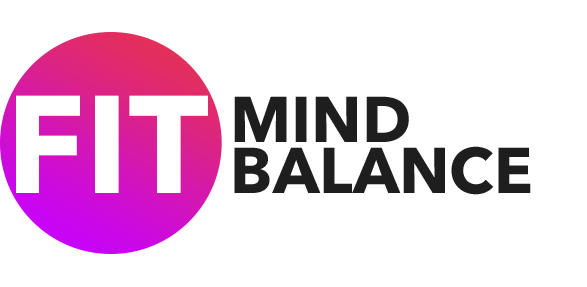
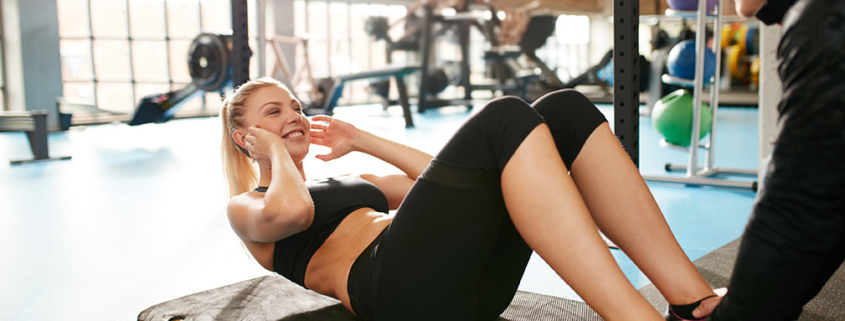


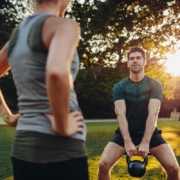
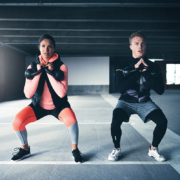
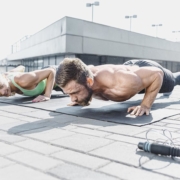
Leave a Reply
Want to join the discussion?Feel free to contribute!